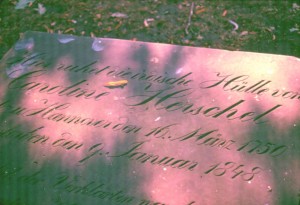By Michael Hoskin

Plate 15 - Caroline Herschel’s tomb in Hanover, photograph courtesy of Owen Gingerich.
A Community for Curious Minds who love History, its Odd Stories, and Good Reads
By Holly Tucker

Plate 15 - Caroline Herschel’s tomb in Hanover, photograph courtesy of Owen Gingerich.
